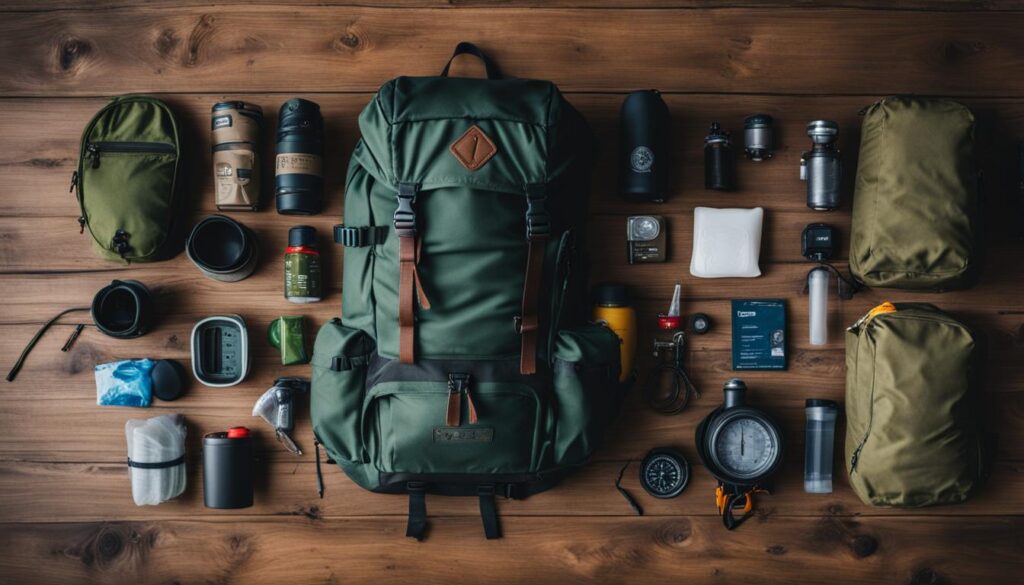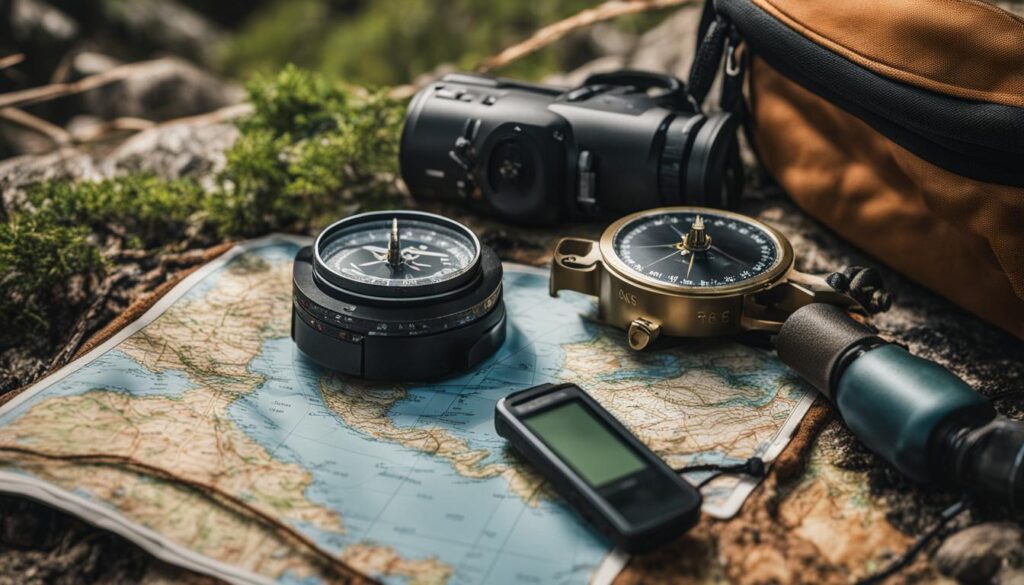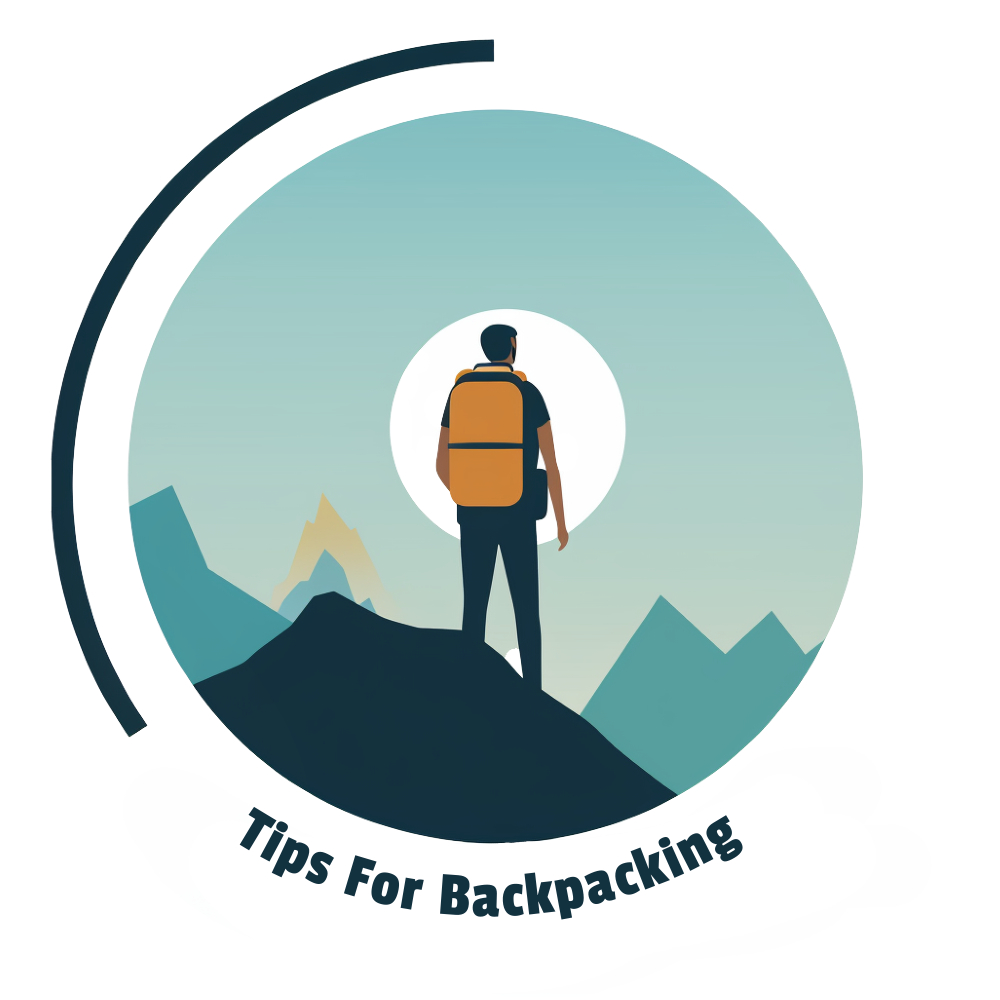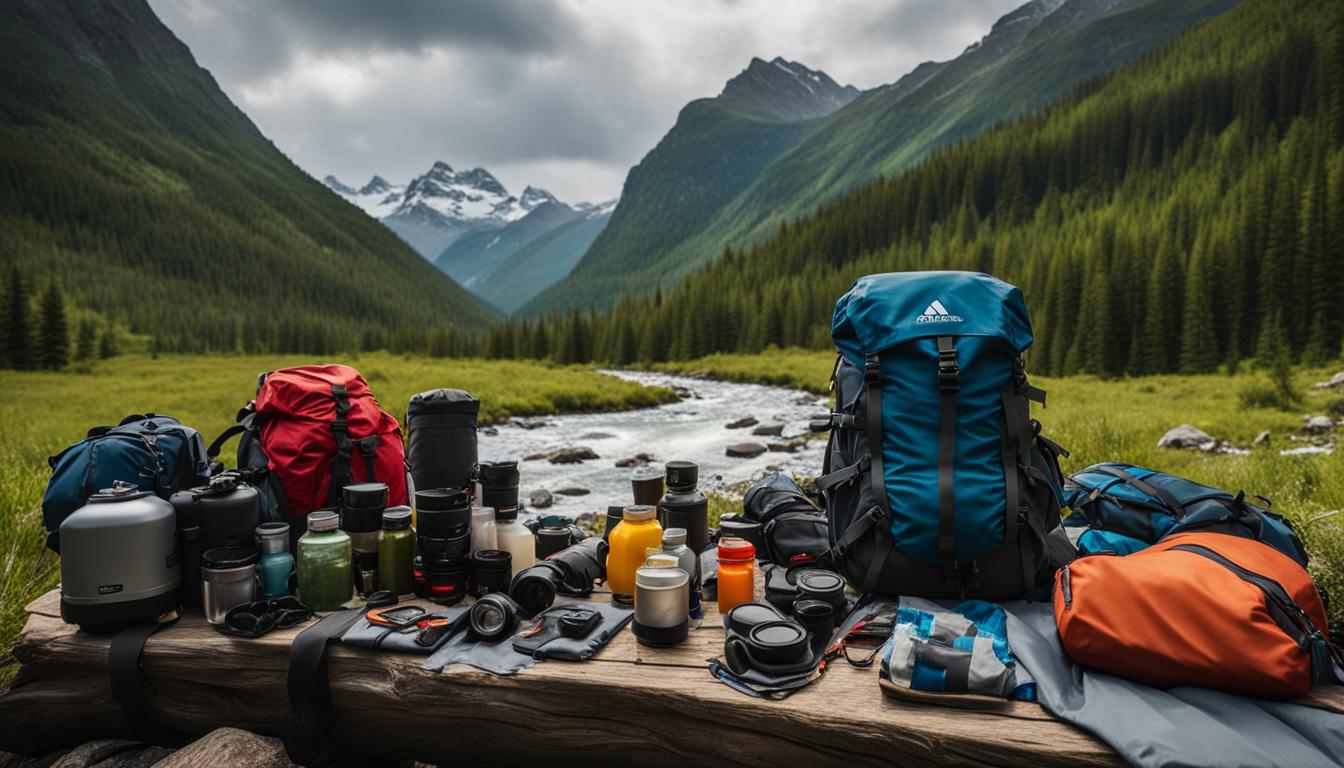Creating a comprehensive backpacking checklist is essential for ensuring you have all the necessary gear and supplies for a successful trip. It’s important to review your checklist before every trip to avoid forgetting any items. To help you with this task, I’ve compiled a detailed list of backpacking essentials, including a backpacking checklist template and must-have items for backpacking. Referencing this checklist will ensure you have everything you need for your next adventure.
Key Takeaways:
- Creating a backpacking checklist is crucial for a successful trip.
- Review your checklist before every trip to avoid forgetting any items.
- Use a backpacking checklist template to stay organized.
- Pack the must-have items for backpacking, such as a backpack, sleeping pad, sleeping bag, tent, and cooking system.
- Referencing the backpacking essentials checklist will ensure you have everything you need for your adventure.
The Backpacking Essentials

When preparing for a backpacking trip, it’s crucial to have the right gear to ensure a comfortable and successful adventure. The backpacking essentials are the core items that you’ll need to pack. These essentials include a durable backpack, a comfortable sleeping pad, a warm sleeping bag, a reliable tent, and a convenient cooking system.
Choosing the right backpack is essential. Look for one that is lightweight yet sturdy, with enough capacity to hold all your gear. A sleeping pad will provide insulation and cushioning for a good night’s sleep. Opt for a lightweight and compact sleeping bag that suits the weather conditions of your trip. A durable tent will protect you from the elements, and a reliable cooking system will allow you to prepare hot meals and drinks on the trail.
Backpacking Gear Checklist
To help you stay organized, here is a comprehensive backpacking gear checklist:
- Backpack
- Sleeping pad
- Sleeping bag
- Tent
- Cooking system (stove, cookware, utensils)
- Water filtration system or purification tablets
- Headlamp or flashlight
- Navigation tools (map, compass, GPS device)
- First aid kit
- Personal hygiene items (toothbrush, toothpaste, toilet paper)
- Extra clothing and layers
- Food and snacks
- Water bottles or hydration bladder
- Sun protection (hat, sunglasses, sunscreen)
- Insect repellent
- Emergency whistle
Remember to tailor this checklist to your specific needs and the conditions of your trip. Consider the length of your journey, the terrain you’ll be traversing, and any additional activities you plan to undertake. By packing the right gear and following a comprehensive backpacking gear checklist, you’ll be well-prepared for your next adventure in the great outdoors.
Table: Backpacking Gear Checklist
| Item | Quantity | Notes |
|---|---|---|
| Backpack | 1 | Ensure it fits comfortably and has enough capacity for your gear. |
| Sleeping pad | 1 | Choose a lightweight and insulating option for a good night’s sleep. |
| Sleeping bag | 1 | Select a bag that suits the weather conditions of your trip. |
| Tent | 1 | Ensure it is durable and provides adequate protection from the elements. |
| Cooking system | 1 | Include a stove, cookware, and utensils for preparing meals. |
| Water filtration system | 1 | Ensure you have a reliable method of purifying water. |
| Headlamp or flashlight | 1 | Provide portable lighting for navigating in the dark. |
| Navigation tools | 1 | Include a map, compass, and GPS device for route finding. |
| First aid kit | 1 | Ensure it contains essential medical supplies for emergencies. |
| Personal hygiene items | 1 | Include items such as a toothbrush, toothpaste, and toilet paper. |
| Extra clothing and layers | 1 | Pack appropriate clothing for changing weather conditions. |
| Food and snacks | 1 | Choose lightweight and nutritious options for sustenance. |
| Water bottles or hydration bladder | 1 | Carry enough water for your trip or have a reliable hydration system. |
| Sun protection | 1 | Protect yourself from the sun with a hat, sunglasses, and sunscreen. |
| Insect repellent | 1 | Prevent bug bites with effective insect repellent. |
| Emergency whistle | 1 | Useful for attracting attention in case of emergencies. |
Backpacking Navigational Gear

When embarking on a backpacking trip, having the right navigational gear is crucial to ensure a safe and successful adventure. Navigational gear consists of essential tools that help hikers navigate trails, stay on track, and avoid getting lost in the wilderness. In this section, I will discuss the key navigational gear items that every backpacker should include in their checklist.
Map of the Trail or Area
One of the most important navigational tools is a map of the trail or area you’ll be hiking in. A detailed and up-to-date map provides valuable information on the terrain, elevation changes, water sources, and potential hazards along the route. It serves as a reliable reference point to help you plan your journey and make informed decisions throughout your backpacking trip.
GPS Device or Phone App
In addition to a map, a GPS device or a reliable phone app can greatly enhance your navigational capabilities. These tools utilize satellite technology to pinpoint your exact location on the trail, allowing you to track your progress and easily find your way back if you veer off course. With the advancement in technology, there are now various GPS devices and smartphone applications specifically designed for outdoor navigation, offering features such as offline maps, route planning, and real-time tracking.
Compass
A compass is a simple yet invaluable navigational tool that should always be part of your backpacking gear. It provides a reliable method to determine direction and orient yourself in relation to the map. By understanding how to read a compass and using it alongside a map, you can confidently navigate through unfamiliar terrain and avoid getting disoriented.
GPS Tracker
A GPS tracker is an optional but highly recommended navigational gear item that ensures an extra layer of safety during your backpacking trip. This device allows you to share your real-time location with family or friends, providing peace of mind to both you and your loved ones. In case of emergencies or if you are unable to communicate your location, a GPS tracker can aid search and rescue teams in locating you quickly.
By including these essential navigational gear items in your backpacking checklist, you can navigate with confidence, explore new trails, and make the most of your outdoor adventures.
Can I Use the Week-Long Backpacking Trip Checklist for Any Backpacking Trip?
Yes, the weeklong backpacking trip checklist can be used for any backpacking trip. It contains essential items such as a sturdy backpack, sleeping bag, tent, food, water purifier, maps, and first aid kit. It’s important to adjust the checklist based on the specific requirements of each trip.
Conclusion
Creating the perfect backpacking checklist requires careful planning and consideration of all the necessary items for your trip. By following a detailed checklist and packing the essential gear, you can ensure that you’re prepared for any backpacking adventure.
One of the most important backpacking checklist tips is to review and update your checklist regularly. Each trip may have specific needs or preferences that you should take into account. By keeping your checklist up to date, you’ll have peace of mind knowing that you have all the necessary items for your adventure.
Remember that the key to a successful backpacking trip is having the right backpacking trip essentials. Whether it’s your first trip or you’re a seasoned backpacker, having a comprehensive checklist is crucial. It will help you stay organized, save time, and ensure that you don’t forget any important gear or supplies.
So, before you embark on your next backpacking adventure, take the time to create a thorough checklist. It will not only make your trip more enjoyable and stress-free but also ensure that you have everything you need for a successful journey into the great outdoors.

